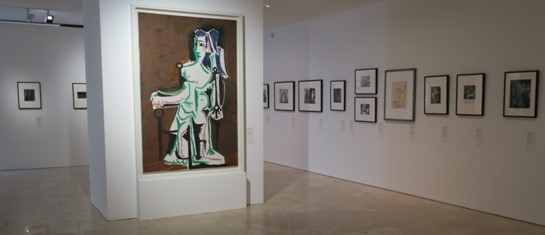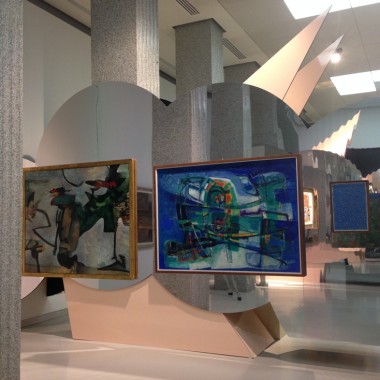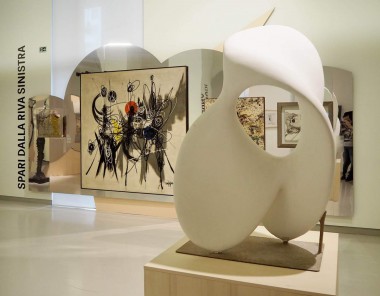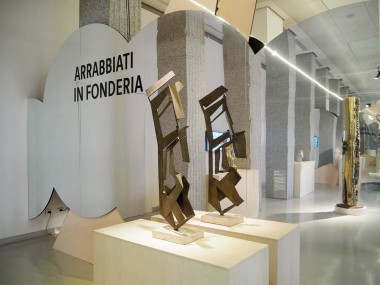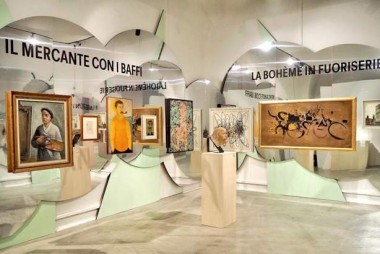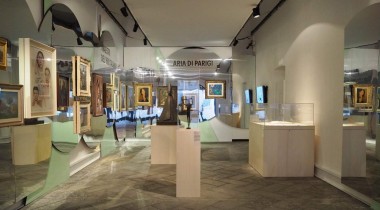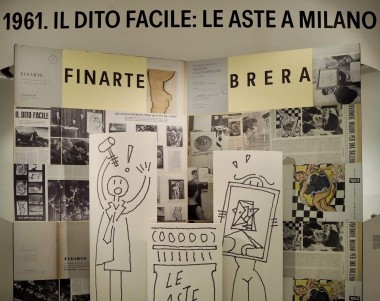The Museo del Novecento with Electa presents BOOM 60! That was Modern Art, an exhibition sponsored by the City of Milan – Culture, and dedicated to art from the early fifties to the early sixties and its reflection in the popular mass media.
The exhibition at the Museo del Novecento will run from October 18, 2016–March 12, 2017, curated by Mariella Milan and Desdemona Ventroni with Maria Grazia Messina and Antonello Negri. It inaugurates the new exhibition spaces with a complex layout between the Arengario and Piazzetta Reale with an exhibit design by Atelier Mendini.
The exhibition, thanks to the extension of the museum layout into the new galleries assigned to the museum, seeks to explore the themes of Italian art in the 20th century while enriching the permanent museum layout. In the conception and choice of artworks, as well as loans from museums and public and private collections, it proved possible to draw on the rich collection of the Museo del Novecento: paintings and sculptures of the city’s heritage from the Boschi di Stefano collection, which is not on permanent display, and so makes a fascinating discovery.
BOOM 60! explores modern art as it was recounted from the early fifties to early sixties in the weekly and monthly illustrated press, the popular newsmagazines.
These were the boom years, when not only the economy and consumption were soaring, but also the sales of illustrated weeklies and monthlies: Epoca, Tempo, Le Ore, Oggi, Gente, L’Europeo, Abc, Oggi, L’Espresso, Vie Nuove, La Domenica del Corriere, La Tribuna Illustrata, Successo, Panorama, L’Illustrazione Italiana, Settimana Incom Illustrata, Lo Specchio, Settimo Giorno. Their readership peaked in this period, with a circulation far greater than that of the newspapers, making them an important means of entertainment, as well as a faithful mirror of the collective outlook and aspirations.
What emerges from the pages of these popular magazines is an alternative picture of modern art and its protagonists, contrasting with the evaluations of cultivated critics. Artistic innovations clashed with the expectations of the general public, who were highly suspicious of them. The magazines often fomented their readers’ prejudices, and at others sought to “educate” them by relating the art world to the forms of mass culture.
The exhibition, with a spectacular exhibit design by the Atelier Mendini, reflects these varied aspects of Italian visual culture in its decisive phase, drawing widely on the Milanese context, as the center of the major commercial publishing houses and much of the most advanced artistic research.
Some 140 works of painting, sculpture and graphic design – chosen in relation to their particular success in the mass media – create a dialogue in four sections: “Major Exhibitions and Controversies”, “Artists in the Magazines”, “Artists and Celebrities”, “The Market and Collecting”, with the most popular photographic and TV illustrations of artworks and artists. A rich documentary section, like a great ‘’newsstand’’ from the past organized in the Sala Archivi of the Museo, presents the public with the magazines and their different ways of recounting modern art, from the covers to feature articles, from criticism to advertising columns, from illustration to photojournalistic images, together with a selection of eight works from which the Dino Buzzati’s Piazza Duomo di Milano.
